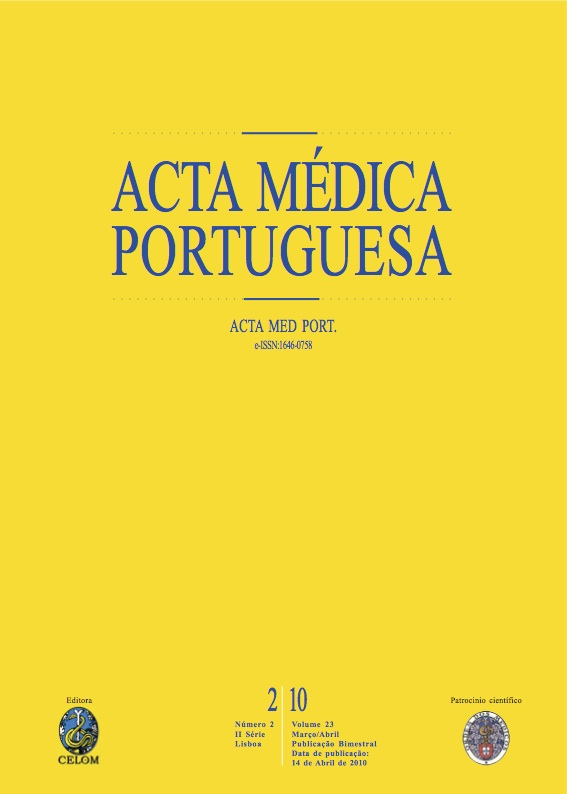O síndrome coronário agudo nos cuidados de saúde primários.
DOI:
https://doi.org/10.20344/amp.614Resumo
It is thought that in the XXI century cardiovascular disease will become the main cause of disability ant death in the world. Cardiac complaints are very common in clinical practice and the high prevalence of coronary disease and its sequels puts the family doctor in the frontline of the struggle against this pathology. This review pretends to inform about the presentation, diagnosis and urgent approach of the acute coronary syndrome as well as the need of continuity of care and secondary prevention.Coronary disease can appear as a myocardial infarction and occurs predominantly in a population susceptible to atherogenesis due to various risk factors. Acute thoracic discomfort is the most usual clinical presentation and the initial evaluation intends to determine its cause through a brief clinical history, physical exam, electrocardiogram and dosing of markers of cardiac necrosis. After confirmation of the diagnosis the patient is submitted to urgent treatment that depends on the form of presentation of the acute coronary syndrome. It usually involves study of coronary anatomy by coronariography and revascularization. After the acute event the coronary patient must initiate a medical therapy with drugs that reduce mortality (antiplatelet therapy, beta-blockers, angiotensin converting enzyme inhibitors and statins) and aggressively control the modifiable risk factors.The family doctor has a primordial role in continuing care initiated at the hospital and in implementing aggressive secondary prevention measures. By knowing and putting them into practice, the family doctor takes his part in reducing the burden of cardiovascular diseases and in controlling this epidemic.Downloads
Downloads
Como Citar
Edição
Secção
Licença
Todos os artigos publicados na AMP são de acesso aberto e cumprem os requisitos das agências de financiamento ou instituições académicas. Relativamente à utilização por terceiros a AMP rege-se pelos termos da licença Creative Commons ‘Atribuição – Uso Não-Comercial – (CC-BY-NC)’.
É da responsabilidade do autor obter permissão para reproduzir figuras, tabelas, etc., de outras publicações. Após a aceitação de um artigo, os autores serão convidados a preencher uma “Declaração de Responsabilidade Autoral e Partilha de Direitos de Autor “(http://www.actamedicaportuguesa.com/info/AMP-NormasPublicacao.pdf) e a “Declaração de Potenciais Conflitos de Interesse” (http://www.icmje.org/conflicts-of-interest) do ICMJE. Será enviado um e-mail ao autor correspondente, confirmando a receção do manuscrito.
Após a publicação, os autores ficam autorizados a disponibilizar os seus artigos em repositórios das suas instituições de origem, desde que mencionem sempre onde foram publicados e de acordo com a licença Creative Commons









